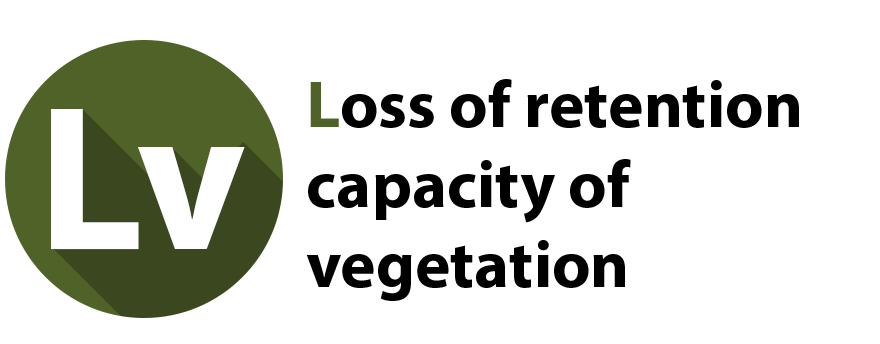Quebrada Parque: urban creek and wetland restoration based on the management of Quebrada Honda as an ecopark with an ecohydrological approach in Puerto Varas (Chile)
Description
Location

Sketch
Information about lithology/geochemistry:
Quebrada Parque is a 3.5 ha site located in Puerto Varas, southern Chile. A permanent creek runs through the site (from south to north), surrounded by steep hillslides along its upper and mid sections. In the lower section, the creek flows into one of the town’s last urban wetlands and then out of it into lake Llanquihue (second largest lake in the country; low water renovation rate makes it vulnerable to pollution). Urban growth and unregulated interventions -including deforestation and wetland filling- have severely compromised the ecosystem services that the site used to provide, particularly in terms of flood control and water quality management. Having identified these challenges, Patagua started in 2017 a collaborative initiative that aims to restore the site in terms of its ecological and hydrological functionality, while also promoting social integration around it.
Main Description
- Peak flows are increasing due to ongoing urban growth in the upper basin, hence the need to increase the wetland’s torage capacity to prevent flooding. The solution has been designed to control the 10-year storm flow with green infrastructure (vegetated parapet around the wetland’s perimeter) and safely evacuate the 100-year storm flow through a spillway into the municipal rainwater network.
- Peak flows are increasing due to ongoing urban growth in the upper basin, hence the need to increase the wetland’s storage capacity to prevent flooding. The solution has been designed to control the 10-year storm flow with green infrastructure (vegetated parapet around the wetland’s perimeter) and safely evacuate the 100-year storm flow through a spillway into the municipal rainwater network.
Enhance ecohydrological processes in novel ecosystem
YES
Apply complementary Ecohydrological processes in high impacted system
YES
This table presents the different categories of ecosystem services that ecosystem can provide, divided in:
Provisioning Services are ecosystem services that describe the material or energy outputs from ecosystems. They include food, water and other resources.
Regulating Services are the services that ecosystems provide by acting as regulators eg. regulating the quality of air and soil or by providing flood and disease control.

Local climate and air quality: Trees provide shade whilst forests influence rainfall and water availability both locally and regionally. Trees or other plants also play an important role in regulating air quality by removing pollutants from the atmosphere.

Erosion prevention and maintenance of soil fertility: Soil erosion is a key factor in the process of land degradation and desertification. Vegetation cover provides a vital regulating service by preventing soil erosion. Soil fertility is essential for plant growth and agriculture and well functioning ecosystems supply the soil with nutrients required to support plant growth.
Ecosystem services "that are necessary for the production of all other ecosystem services". These include services such as nutrient recycling, primary production and soil formation.
Cultural Services corresponds nonmaterial benefits people obtain from ecosystems through spiritual enrichment, cognitive development, reflection, recreation, and aesthetic experiences.

Recreation and mental and physical health: Walking and playing sports in green space is not only a good form of physical exercise but also lets people relax. The role that green space plays in maintaining mental and physical health is increasingly being recognized, despite difficulties of measurement.
Lifezones
![]()
PPT(mm/yr): 1.0
![]()
T(ºc): 10.0
| Elevation of demosite: | 60.0 meters above sea level |
| Humidity: | Perhumid |
| PETr (by year): |
EH Principles
Quantification of the hydrological processes at catchment scale and mapping the impacts
ECOHYDROLOGY ENGINEERING SOLUTIONS
Peak flows are increasing due to ongoing urban growth in the upper basin, hence the need to increase the wetland’s storage capacity to prevent flooding. The solution has been designed to control the 10-year storm flow with green infrastructure (vegetated parapet around the wetland’s perimeter) and safely evacuate the 100-year storm flow through a spillway into the municipal rainwater network.
 Hydrological Flow
Hydrological Flow
A. Upper section: Conservation area. Vegetation is being preserved as a dual regulation strategy. B. Upper-mid section: Restoration area. Garbage has mostly been removed through participatory activities. C. Lower-mid section: Restoration area. D. Lower section: Restoration and public use area.
 Ecohydrological Infrastructure
Ecohydrological Infrastructure
In terms of ecological planning, fours areas are identified across de site from upstream to downstream: A. Upper section: Confluence of two small tributaries; high vegetation cover; water uptake, biomass production and habitat provision. B. Upper-mid section: High carrying capacity; biomass production; high coverage of exotic invasive species; frequent garbage dumping. C. Lower-mid section: Remnants of native Myrtaceae flooded forests. D. Lower section: Intervened wetland
 Ecohydrological Infrastructure
Ecohydrological Infrastructure
Major Issues
- Frequent floodings and infrastructure damage in the lower urban basin due to: (a) wetland filling (reduced storage and retention capacity)
- and (b) alteration of the system’s natural hydrological regime (higher peak flowscaused by retention and infiltration loss in the upper basin). The following image shows flooding areas for a 5-year storm (brown) and for a 100-year storm (pink). The latter occurred in 1995, causing the rupture of the main road downstream.








Expected Outcomes
Latest Results
Contacts
1 Camila Teutsch
- camila@patagua.cl
- https://www.patagua.cl/
- PATAGUA
- https://www.patagua.cl/
2 Francisco Riestra
- francisco.riestra@gmail.com
- https://conaphichile.com/
- CONAPHI, Chile
- https://conaphichile.com/
Cristian Núñez
- cristian.nunez.r@mop.gov.cl
- https://www.mop.gob.cl/
- Dirección de Aguas
- https://www.mop.gob.cl/
Social ecohydrological system
EH Objectives
EH Methodology
Catchment Ecohydrological sub-system
Objectives
Stakeholders
Catchment Sociological sub-system
Activities